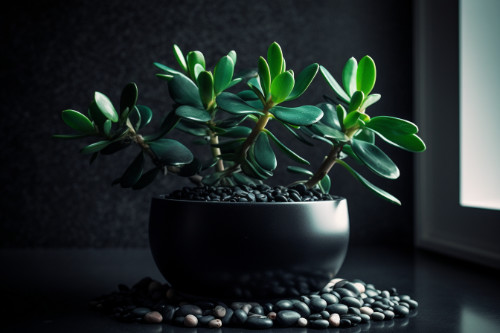The Best Indoor Plants for Your Cebu Home and How to Care for Them
Indoor plants are a wonderful addition to any home, providing not only aesthetic beauty but also numerous health benefits. In today’s world, where most of us spend our time indoors due to work or other commitments, having indoor plants is an excellent way to bring nature inside and improve our living spaces’ air quality.
Cebu homeowners are fortunate enough to have plenty of options when it comes to selecting the best indoor plants for their homes. From the popular Cebu Blue Pothos and Monstera plant to lesser-known tropical varieties, there is no shortage of choices available in Cebu.
However, taking care of indoor plants can be challenging, especially for those who lack experience or knowledge of gardening. Therefore, this article will provide readers with detailed information on the best indoor plants suitable for Cebu homes and how to care for them effectively.
Cebu Blue Pothos
The Cebu Blue Pothos, a popular and visually striking houseplant with unique blue-green foliage, is an exceptional choice for those looking to add some greenery to their indoor spaces. This plant is native to the Philippines, specifically in the province of Cebu, where it gets its name. It belongs to the pothos family and is also known as Epipremnum pinnatum ‘Cebu Blue’.
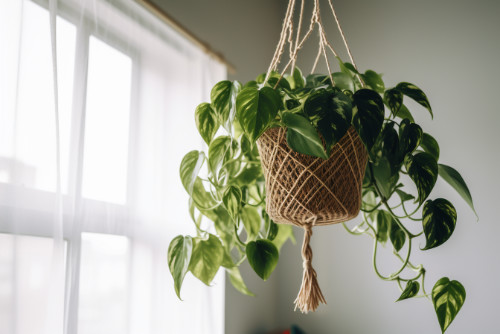
Another great feature of this houseplant is that it can be grown as a hanging plant or trained on a trellis or moss pole. Its trailing vines can reach up to 10 feet long, making it an excellent addition to any room that needs some height and texture.
With proper care, your Cebu Blue Pothos will reward you with lush foliage that adds life and beauty to your home.
In summary, if you are looking for a beautiful yet low-maintenance indoor plant that can be grown hanging or climbing a support structure, consider adding a Cebu Blue Pothos to your collection. With its unique blue-green foliage and easy-care requirements, this houseplant is sure to bring joy and life into your home environment for years to come.
Monstera and Philodendron
Monstera and Philodendron are commonly chosen for indoor greenery due to their attractive, tropical foliage and ease of care. These plants are perfect for those who want to add a touch of the jungle to their home without having to go through the hassle of maintaining high-maintenance plants. They thrive in low light conditions and can easily adapt to varying indoor conditions, making them ideal houseplants.
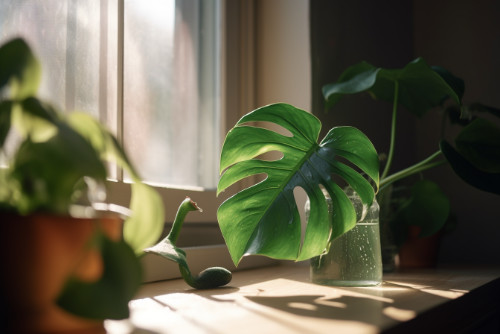
In addition, here are five tips on how you can take good care of your Monstera or Philodendron:
• Water your plant once a week.
• Fertilize once a month during the growing season.
• Dust the leaves regularly with a damp cloth.
• Provide support for trailing vines by using trellises or moss poles.
• Prune any yellowing leaves or stems.
Both Monstera and Philodendron are easy-to-grow tropical plants that can add an elegant touch of greenery into any living space. The long trails on these plants make them even more appealing as they cascade down shelves or hang in baskets, creating a stunning display. With proper care, these houseplants will continue to flourish and bring life into your home’s interior design for years to come.
Fern Varieties
Fern varieties offer a diverse range of options for indoor greenery, bringing a unique texture and elegance to any living space. Ferns are known for their beautiful green leaves that come in different shapes and sizes.

Another fern variety that has gained popularity among plant parents is the Swiss Cheese Plant or Monstera Adansonii. This plant features large, fenestrated leaves that are shaped like Swiss cheese holes, giving it its distinct name. It thrives in indirect bright light but can also tolerate lower light conditions, making it an ideal choice for those who have limited access to natural sunlight.
Caring for fern varieties requires some attention to detail, such as keeping them in well-draining soil and watering them regularly without letting the soil become too dry or waterlogged. They also benefit from occasional misting to increase humidity levels around their foliage.
With proper care, these plants can thrive indoors and provide a refreshing touch of nature to any living space.
Jade and Snake Plant

Jade, also known as Crassula ovata, is a succulent plant with thick stems and glossy, heart-shaped leaves. It is commonly used for bonsai due to its small size, but can grow up to 6 feet tall when allowed to flourish in optimal conditions.
To care for jade plants, it is recommended to use well-draining soil and a pot with drainage holes to prevent root rot. These plants require infrequent watering as they store water in their leaves and stems. Overwatering may lead to yellowing of the leaves or fungal diseases. When repotting, it is best to do so during spring or summer months, using fresh soil mixtures composed of coarse sand or perlite for better drainage.

In summary, jade and snake plants are excellent choices for those who want an attractive yet fuss-free addition to their home interiors. With proper care, such as appropriate watering schedules, well-drained soil mixtures, and adequate lighting levels, these plants can last for years while adding aesthetic value and improving indoor air quality at the same time!
Tropical Plants
Tropical plants offer a diverse range of options for indoor greenery, each with unique characteristics that can enhance the aesthetic appeal and air quality of any interior space.
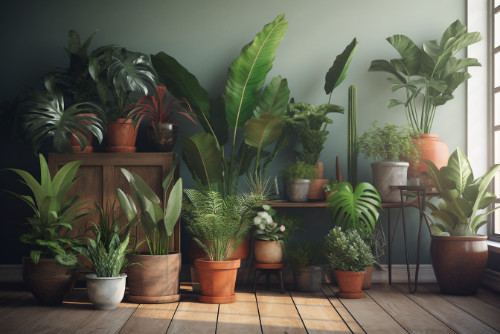
Another notable tropical plant is the Swiss Cheese Plant (Monstera Deliciosa). This plant features large, glossy leaves with distinctive holes throughout, giving it a unique appearance compared to other foliage plants. The Swiss Cheese Plant thrives in bright, indirect light and requires moderate watering. It can also benefit from occasional misting to boost humidity levels around the plant.
Lastly, Areca palms are a great choice for those looking to add a touch of the tropics to their homes. These palm trees feature feathery fronds that sway gently in the breeze, adding movement and life to any room. They prefer bright but indirect light and require consistent watering to keep their soil moist but not waterlogged.
Incorporating tropical plants like the Cebu Blue Pothos, Swiss Cheese Plant, and Areca Palm into your home can create an inviting atmosphere while also improving air quality by removing toxins from the air. With proper care and attention, these plants can thrive indoors for years to come, providing enjoyment and benefits beyond just their aesthetic appeal.
Trailing Plants
Trailing plants offer a visually appealing and versatile option for indoor greenery, as they can be trained to cascade from hanging baskets or climb trellises to fill spaces in an aesthetically pleasing manner.
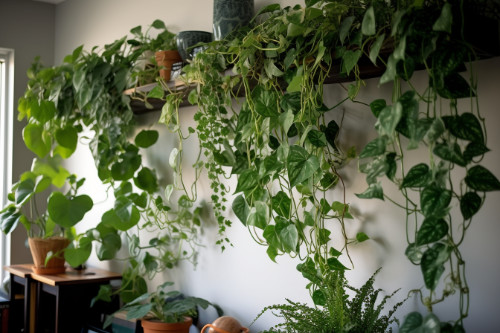
Another great trailing plant option is the String of Pearls, also known as Senecio rowleyanus. This unique plant features small, pearl-like leaves that grow on thin, delicate stems that can reach up to three feet long. It’s ideal for hanging baskets or cascading over shelves and requires bright but indirect light with minimal watering needs.
Lastly, the English Ivy is a classic trailing plant that has been used indoors for centuries. With its ability to grow quickly and easily adapt to different environments, this vine has become one of the most popular houseplants around. With its dark green foliage and trailing vines, it adds both beauty and texture to any room while being low maintenance and easy to care for.
Incorporating these beautiful trailing plants into your indoor space not only adds visual appeal, but also provides numerous benefits, such as purifying the air quality inside your home.
With their ease of care and versatility when it comes to placement options, there’s no excuse not to add one (or all) of these best indoor trailing plants into your home decor today!
ZZ Plant

One of the most significant advantages of the ZZ plant is its ease of care. This low-maintenance houseplant requires minimal attention and can tolerate neglect for extended periods. It thrives in indirect light, but can also tolerate low light conditions with ease. The ZZ plant’s ability to adapt to different lighting situations makes it an ideal choice for those looking for a versatile indoor plant that does not require constant attention.
With quarantine measures in place worldwide, many have turned to indoor plants as a way to bring life into their homes while staying safe indoors. The ZZ plant’s popularity has skyrocketed due to its ability to thrive in almost any environment and its hardy nature when faced with neglect or inconsistencies in care.
Whether you’re new to gardening or looking for a tough yet beautiful addition to your collection, the ZZ plant should be at the top of your list.
Quarantine-Friendly Choices
Amidst the global pandemic and resulting quarantine measures, indoor gardening has become a popular pastime for many. With the need to stay at home, people are investigating how to bring natural beauty into their living spaces without adding undue stress or complexity. One way to achieve this is by exploring low-maintenance options such as those featured in the Quarantine-Friendly Choices section.
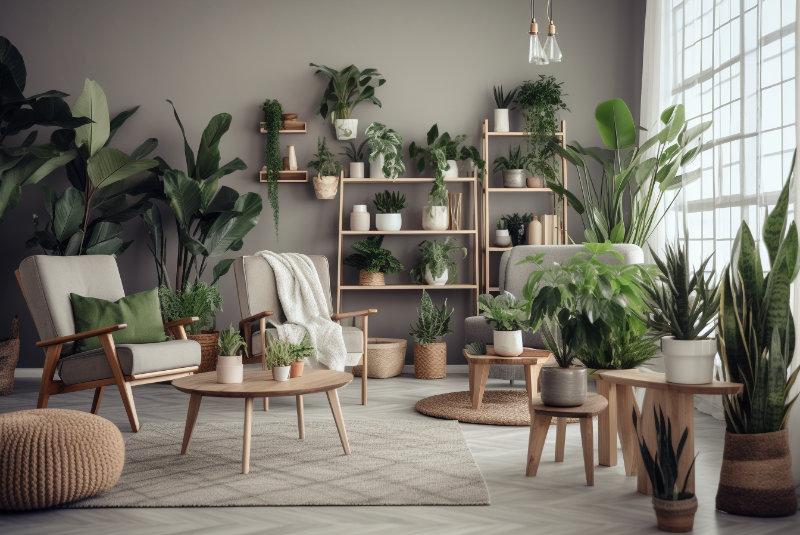
In addition to being easy-care options, these plants offer numerous benefits beyond aesthetics. Studies have shown that having plants indoors can help reduce stress levels and improve air quality by removing toxins from the environment. By incorporating these quarantine-friendly choices into your home decor, you not only add a touch of natural beauty, but also create a healthier living space for yourself and your loved ones.
Peace Lily and Chinese Evergreen
By highlighting the Peace Lily and Chinese Evergreen as suitable options for indoor gardening, this section emphasizes the importance of selecting plants that require minimal maintenance while offering numerous benefits beyond aesthetics.

To ensure the proper care of these low-maintenance houseplants, it is important to plant them in a pot with good drainage. The soil should be kept moist but not waterlogged. Overwatering can cause root rot and damage to the plant’s leaves. Fertilizing once every few months with a balanced fertilizer will also promote healthy growth.
The Peace Lily and Chinese Evergreen prefer medium to bright light conditions, but can tolerate low light environments as well. These versatile houseplants are easy to care for and do not require any special attention or expertise in gardening.
By incorporating these plants into your home decor, you can reap their numerous health benefits while enhancing your living space with their beauty and greenery.
Care Tips
This section provides valuable care tips for ensuring the healthy growth and maintenance of the Peace Lily and Chinese Evergreen indoor plants.
One of the most critical things to keep in mind is proper drainage. These plants require well-draining soil, as they do not tolerate standing water or overly wet roots. Adding a layer of gravel or small rocks at the bottom of their pots can help with drainage.
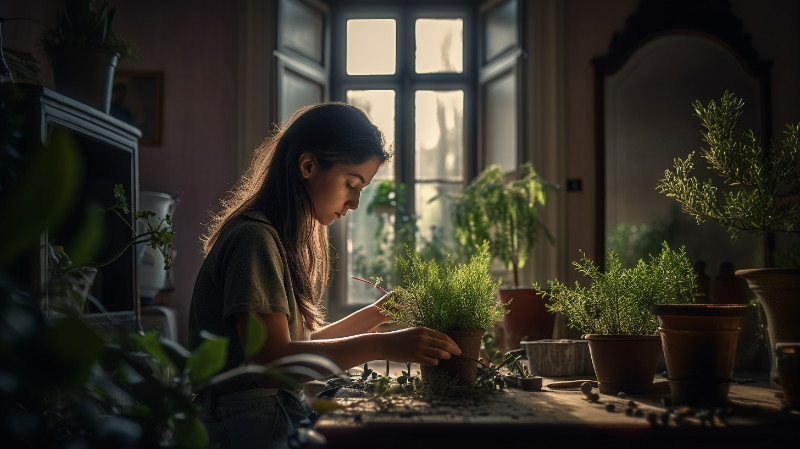
Occasional fertilization can also promote healthy growth and flowering in these indoor plants. A balanced liquid fertilizer once every 2–3 months during spring and summer should suffice for both species.
Furthermore, pruning or cutting back any yellowing or dead leaves will aid in maintaining plant health. In addition, to add aesthetic value, one could try placing them in hanging pots or arranging them alongside other succulent varieties that thrive indoors under similar light and watering conditions.
Frequently Asked Questions
What are some alternative indoor plant options for individuals who do not have access to direct sunlight?
Indoor plants are a great way to add some greenery to your home, but not all homes have access to direct sunlight. Luckily, there are alternative indoor plant options that can thrive in low light conditions.
Some popular choices include snake plants, peace lilies, and pothos. Snake plants are known for their ability to purify the air and require minimal care. Peace lilies are also good air purifiers and produce beautiful white flowers. Pothos is a trailing plant that can add some dimension to your space and is easy to propagate.
When caring for these plants in low light conditions, it’s important to avoid overwatering, as this can lead to root rot. Additionally, regularly dusting their leaves will help them absorb more light.
By choosing the right indoor plants and providing them with proper care, you can bring life into any space, even without direct sunlight.
What are some common mistakes people make when caring for indoor plants?
Caring for indoor plants can be a rewarding experience, but it requires diligence and attention to detail. One of the most common mistakes people make when caring for indoor plants is overwatering. This can lead to root rot and ultimately kill the plant. Another mistake is placing the plant in an area with insufficient light, which can stunt growth or cause the leaves to yellow. Additionally, using soil that lacks proper drainage or not fertilizing regularly can negatively impact a plant’s health.
To ensure your indoor plants thrive, it’s crucial to research their specific care requirements and provide them with adequate water, light, soil, and nutrients.
By avoiding these common pitfalls and proactively tending to your plants’ needs, you’ll be rewarded with beautiful foliage that enhances your home’s ambiance.
How often should indoor plants be fertilized, and what type of fertilizer is best?
Indoor plants require fertilization to thrive and grow healthy. The frequency of fertilization varies depending on the type of plant, its growth rate, and the type of fertilizer used. Generally, indoor plants should be fertilized every 2–4 weeks during their active growing season and once a month during their dormant phase.
It is essential to use a balanced fertilizer that contains all necessary nutrients in appropriate amounts for optimal growth. Some popular types of fertilizers for indoor plants include water-soluble granules, liquid concentrates, or slow-release pellets.
It is crucial to follow the manufacturer’s instructions carefully while using any fertilizer to avoid over-fertilizing and causing harm to the plant. By providing adequate nutrition through regular fertilization, your indoor plants can flourish and add beauty to your home decor.
Can indoor plants be harmful to pets, and if so, which ones should be avoided?
Indoor plants can be a great addition to any home, but it’s important to keep in mind that some types of indoor plants can be harmful to pets. Certain species of plants contain toxins that can cause a range of symptoms in animals, from mild digestive upset to more serious health problems.
Some common examples of toxic indoor plants include the peace lily, philodendron, and snake plant. If you’re a pet owner, it’s critical to do your research before bringing any new indoor plant into your home.
Consider consulting a veterinarian or knowledgeable plant expert for guidance on safe options for your furry friends. With proper care and attention, you can enjoy the beauty and benefits of indoor plants while keeping your pets safe and healthy.
What are some creative ways to display indoor plants in small living spaces?
When it comes to creative ways of displaying indoor plants in small living spaces, there are many options available. One approach is to use hanging planters or wall-mounted containers to maximize vertical space.
Another idea is to group several small plants together on a tabletop or shelf, creating a mini garden effect. Terrariums and glass jars filled with succulents or air plants can also add visual interest without taking up much space. Additionally, using decorative pots and plant stands can elevate the aesthetic appeal of indoor greenery while also adding some personality to the decor.
Ultimately, the key is to experiment with different arrangements until finding a style that works best for one’s home and personal taste.
Conclusion
Indoor plants are a great addition to any home, not just for their aesthetic value but also for the benefits they bring. From purifying the air we breathe to reducing stress and anxiety, these green companions offer more than just visual appeal.
In Cebu homes, some of the best indoor plants include the Cebu Blue Pothos, Monstera and Philodendron varieties, Ferns, Jade and Snake Plants, Tropical Plants, and ZZ Plant.
Caring for indoor plants requires attention to detail as each plant has its unique needs that must be met. For instance, overwatering can lead to root rot while under-watering can cause leaves to wilt and eventually die off. Therefore understanding how much light a plant requires or what type of soil it thrives in is crucial information if one aims to keep their green friends healthy.
In conclusion, indoor plants are not only aesthetically pleasing but also help create an ambiance of tranquility in any space. They require care and attention like any living being but once nurtured properly can thrive beautifully. As a metaphorical representation of life’s delicate balance between nurturing and growth, indoor plants remind us of our connection with nature and our responsibility towards it.
So let us cherish these natural wonders as we continue to add color and beauty to our homes while benefiting from their healthful properties.
About HomiLee Homes
HomiLee Homes stands as a paragon of excellence in the construction landscape of Cebu City, celebrated for the creation of custom luxury homes within elite residential locales. An integral part of HomiLee Incorporated, we harness the expertise of top-notch professionals to deliver a suite of innovative services, including landscaping and interior design, promising unmatched value.
From spearheading expansive residential subdivisions to crafting single detached units, our seamless processes streamline the construction journey. We shoulder the complexities of securing permits and adhering to legalities, allowing our clients to focus on their vision. Reach out to HomiLee Homes today, and let us transform your dream home into a tangible, exquisite reality.
Send an Inquiry
HOME DEVELOPMENT + CONSTRUCTION + DESIGN
Join Our Newsletter
© All Rights Reserved | 2025 HomiLee Incorporated
